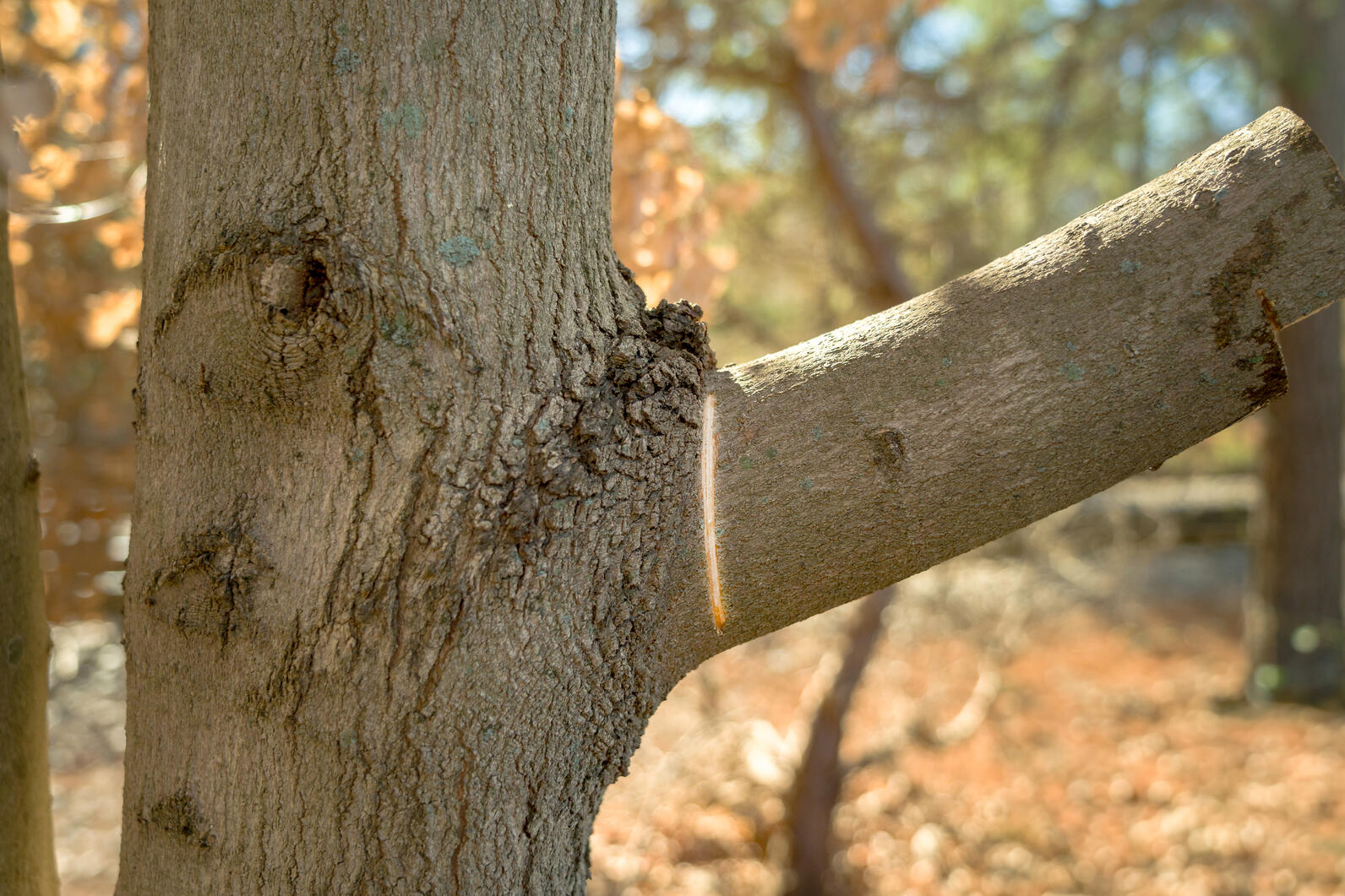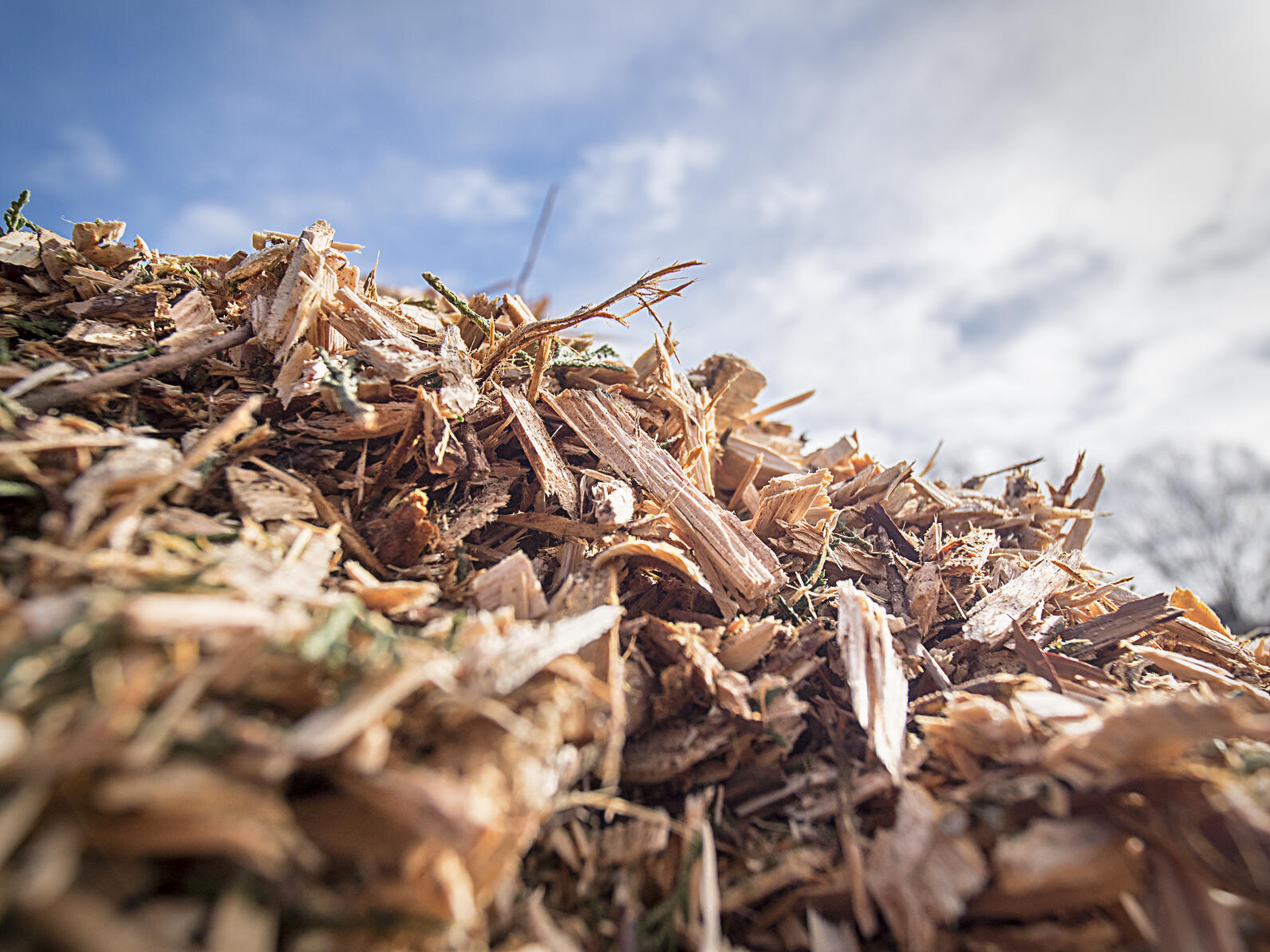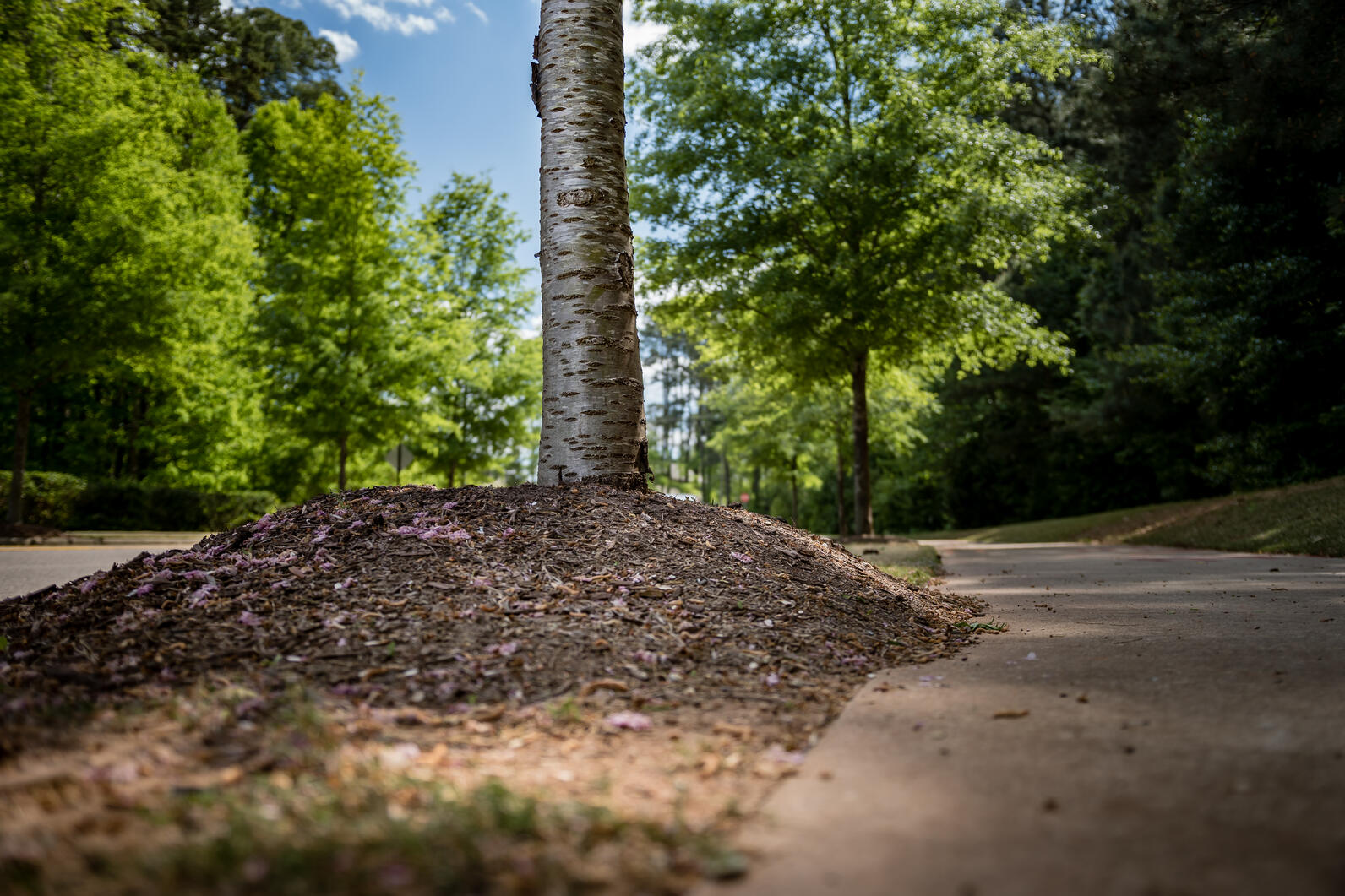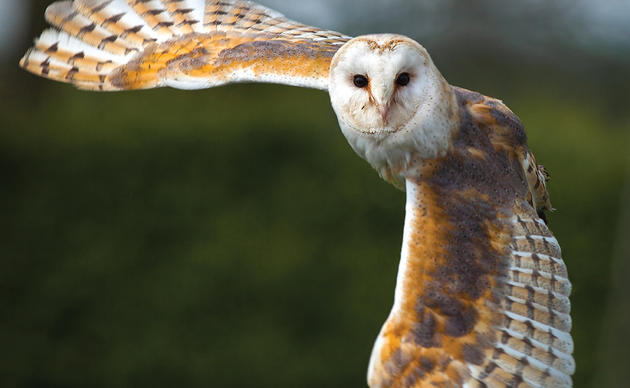Celebrate spring by tending to your trees—the birds will thank you.
Across North Carolina we are losing urban and suburban forest faster than any other forest type. The good news is that we can take action to help, starting in our own yards and neighborhoods. By doing so, we can help birds continue to have places to forage and nest. "Learning the basics of good tree care is a great way to get your hands dirty and help birds this spring,” said Hannah Pursley, Audubon North Carolina’s Urban Forestry Program Manager.
Before you start your annual yard work, read on to learn how you can ensure your trees live a long and healthy life.
According to Basil Camu, co-founder of Leaf & Limb and author of From Wasteland to Wonder - Easy Ways to Help Heal Earth in the Sub/Urban Landscape, there are three easy ways to maintain healthy, long-living trees.
They are to keep tree roots intact, build health through the soil, and build strength through pruning. “These things cover almost everything you’ll ever need to do for your trees to keep them happy and healthy,” said Camu.
Protecting the roots
In urban/suburban landscapes, roots only grow about 2 feet down into the ground and cover the same circumference as the branches which means that it’s fairly easy to damage them. If you injure the root zone, you can kill or seriously destabilize a tree, so tread carefully when digging. “If you have to do any serious work on your property, it’s always best to talk to a professional and ensure you’re keeping the safety of your trees in mind,” said Camu.
Build strength through pruning
In an ideal forest, trees are crowded closely together and compete for resources like sunlight and nutrients. They have to grow straight and their branches need to be as efficient as possible. These trees have an ideal structure that makes them strong and resistant to storms and heavy winds.
In urban/suburban landscapes trees often don’t have to compete as much for resources, allowing them to grow multiple trunks and long, crowded branches. These trees have poor structure and are susceptible to being split or toppled during storms and high wind events.
“The good news is that we can avoid these negative outcomes through structural pruning which mimics the competition a tree would experience in the forest,” said Camu.

The basic idea behind structural pruning is to create a tree with one main trunk and well-spaced branches. Start with younger trees that will be easier to prune. If branches are higher up, call an expert who can prune your trees safely.
Structural pruning can happen any time of year but if you plan to prune more than 25 percent of the tree's live growth, it’s best to wait until the dormant season. The dormant season roughly starts when the leaves fall off the trees in the fall and ends when the first buds start to bloom in the spring.
The best time to plant a tree is also during the dormant season, as they have time to fully establish before the growing season. According to Camu, a good native tree to plant no matter where you are in North Carolina is the American fringe tree (chionanthus virginicus). “It’s salt adapted, sun adapted, poor soil adapted, and has beautiful white flowers,” said Camu.
Native trees are especially important as they host caterpillars and other insects' birds rely on. “It can take thousands of insects to raise even 5 small chickadees to maturity,” said New Hope Bird Alliance Conservation Chairperson Barbara Driscoll. “As our area becomes more developed it is critically important that native trees are planted for birds and pollinators to survive in urban areas.”
To learn more about structural pruning and how to perform it properly, check out this video from Leaf & Limb and chapter 12 of their free eBook, which breaks down the tools you need, how to perform structural pruning, and how to choose a service provider if needed.
Build health through the soil
In highly altered landscapes it is extremely important to pay attention to soil health, as years of development and agricultural practices can drain the soil of its nutrients. There are four main things you can do in your yard or garden to promote soil health.
- First, leave your leaves. Fallen leaves act as a natural fertilizer, returning nutrients to the soil as they rot. They also provide habitat for thousands of species of insects—from luna moths to swallowtail butterflies, bees, beetles and more—which forage, reproduce, and seek shelter in fallen leaves. In turn, the insects provide food for birds. “Leaving your leaves is one of the easiest things you can do for birds,” said Driscoll. Learn more from New Hope Bird Alliance here.
- Second, add mulch under your trees and shrubs. But not just any mulch, according to Camu. “Arborist woodchips, which you can get from your local tree service for free, have more diversity of plant parts and species, and provide more nutrients back to the soil,” he said.

The mulch you get from your local garden center is deeply processed and the more you use it, the more waterproof it becomes—repelling water from soaking into the soil rather than allowing it to flow through. Call your local tree service or visit chipdrop.com to source free arborist woodchips.
According to Driscoll, it’s important to be careful not to create a mulch volcano under your trees. If you or your HOAs use a landscaping service, discourage them from piling mulch around the base of trees. This can make trees vulnerable to pests and diseases and drastically shortens the life of the tree. Only the roots should be covered by mulch. Find more native plant landscaping tips in the chapters manual.

- Third, use compost and avoid using fertilizers. While composting can seem daunting, there is really nothing to it besides “throwing it in a pile and letting it rot,” said Camu. You can rake your leaves, sticks, pruning, and food scraps into a pile and let it sit there. After about a year you’ll have a pile of gold for your trees and shrubs.
- The fourth thing is to plant understory trees and shrubs, which not only creates a more diverse ecosystem for birds and insects, but a highway of nutrients in the soil that can be shared among your plants. “Shrubs such as Spiceberry, American beautyberry, Chokecherry, Inkberry and Winterberry provide berries high in fat and the nutrients that birds need,” said Driscoll.
“Dead trees can often provide as much for wildlife as live trees,” adds Driscoll. When possible, leaving dead trees for wildlife is a great option as they create places for woodpeckers to build nest cavities. After they’re done, they can be used by Eastern Bluebirds, Tufted Titmice, Carolina Chickadees, and Brown-headed Nuthatches.
All this and more can be found in chapter 14 of Camu’s book and New Hope Bird Alliances Native Plant Landscapes manual.
The actions you take at home matter
Birds rely on trees for food and shelter. In order to create healthy and diverse urban forests, we have to start with the actions we take at home and then advocate for those changes in our communities.
Driscoll is leading the charge with New Hope Bird Alliance as they work to strengthen new development ordinances in and around Durham. Including advocating for requirements to not only plant 100% native canopy trees but also increased biodiversity in the numbers and types of trees planted in new developments.
This advocacy has resulted in big wins. Our chapters advocate for people to go lights out during spring and fall bird migration, plant native plants in their yards and gardens, and lobby city and town councils to incorporate bird-friendly landscaping policies whenever possible.
“We do this work so North Carolina’s cities and towns continue to have healthy trees and forests that provide habitat for birds and clean air and green spaces for all people,” said Pursley.
Learn more about Audubon’s Urban Forestry program and how you can get involved here.







